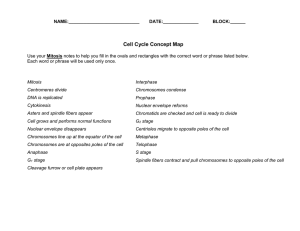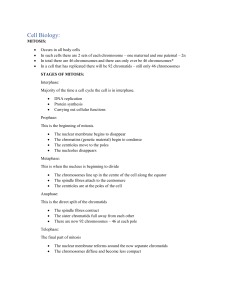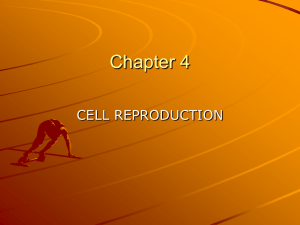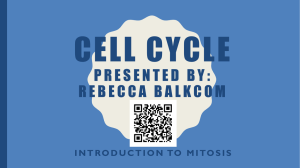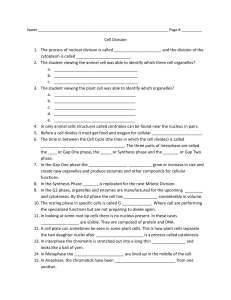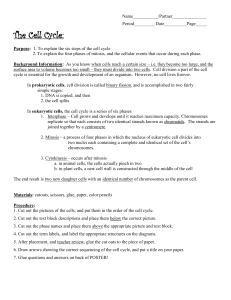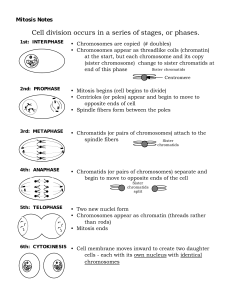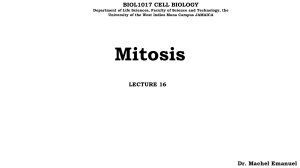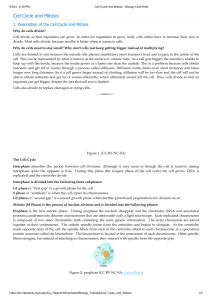Mitosis
advertisement
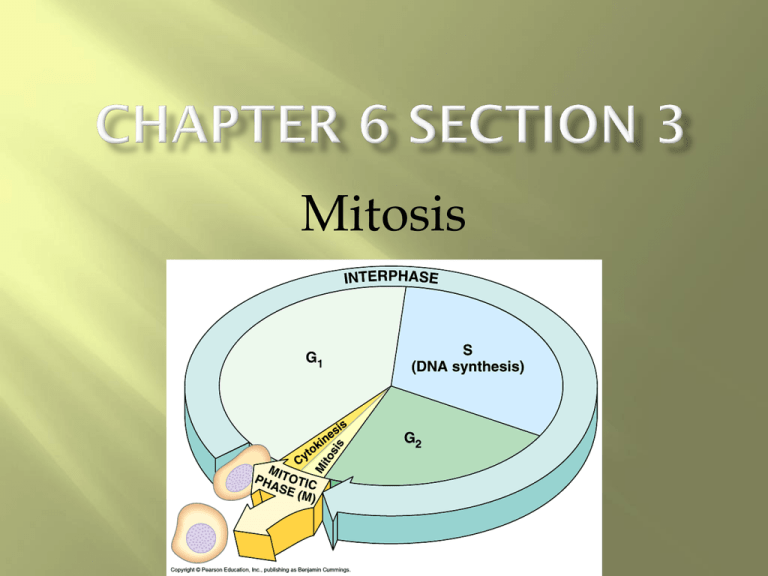
Mitosis During mitosis, the chromatids on each chromosome are physically moved to opposite sides of the dividing cell with help of the spindle fibers. Spindles are cell structures made up of both centrioles and individual microtubule fibers that are involved in moving chromosomes during cell division. When a cell enters the mitotic phase, the centriole pairs start to separate, moving toward opposite poles of the cell. As the centrioles move apart, the spindle begins to form. The chromatids are moved to each pole of the cell in a manner similar to bringing in a fish with a fishing rod and reel. When the microtubule “fishing line” is “reeled in” the chromatids are dragged to opposite poles. As soon as the chromatids separate from each other they are called chromosomes. Step 1: Prophase: Nuclear envelope dissolves. Chromosomes coil and condenses, thus becoming visible. Spindle fibers form. Step 2: Metaphase Chromosomes move to the equator of the cell. Step 3: Anaphase Chromotids divide at the centromere and move to opposite poles. Step 4: Telophase Nuclear envelope reforms. Chromosomes uncoil and disappear. Pinching of parent cell begins. As mitosis ends, cytokinesis begins. During cytokinesis, the cytoplasm of the cell is divided in half, and the cell membrane grows to enclose each cell, forming two daughter cells as a result. The end result of mitosis and cytokinesis is two genetically identical cells where only one cell existed before.

